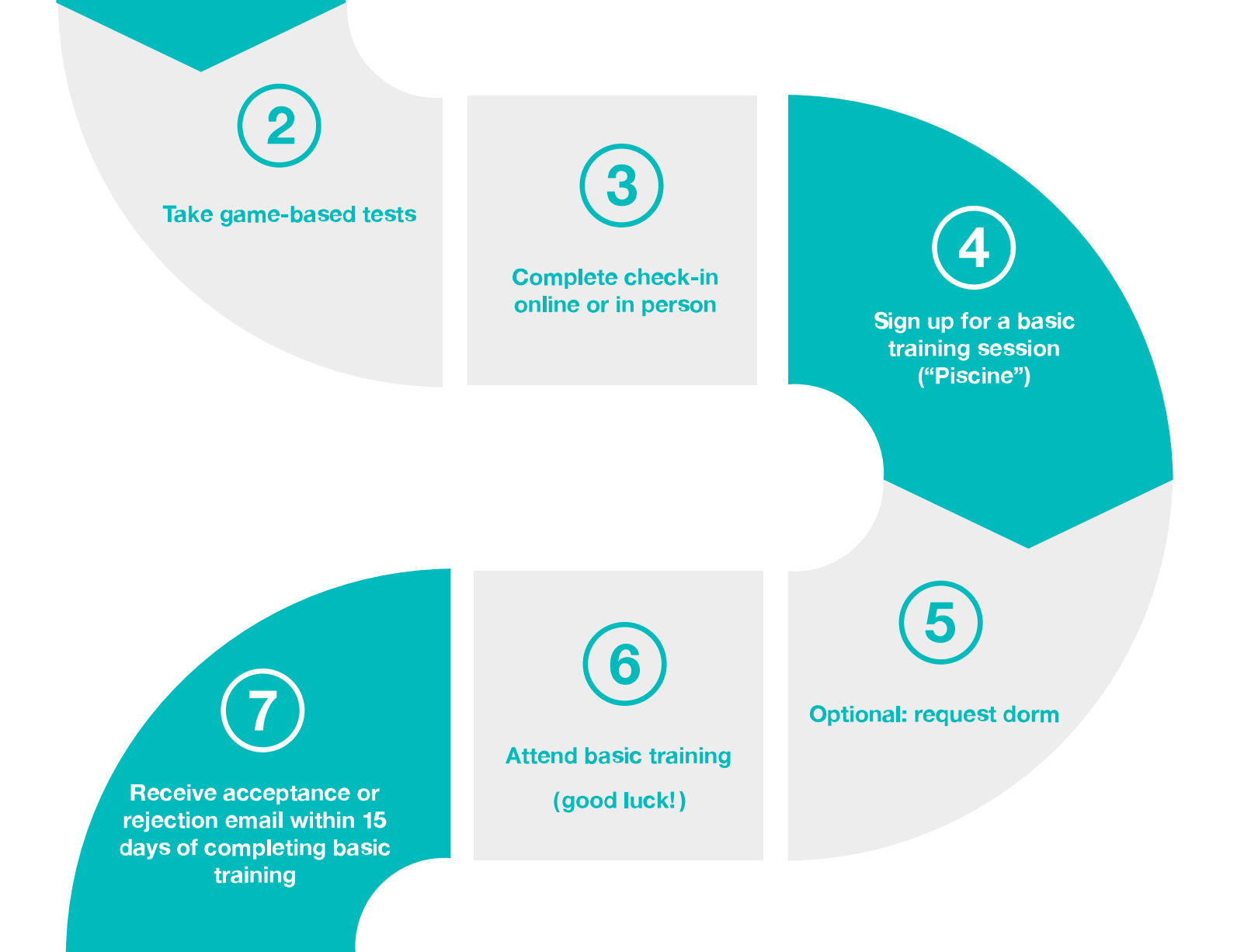As explained in the previous post, I picked up programming in 2018 at a place named ’42’ (as in Hitchhiker’s guide to the galaxy) and got very much addicted to it. This post will outline how that happened and my somewhat non-traditional path in learning programming.

It all started one winter night in 2017 at a random hostel in HongKong, I went there for a few days between trips to pick up my Canadian visa. After visiting Disneyland and re-visited a few tourist attractions I found that there’s not much to fill my days with in this humid and bustling city. As I browsed blogs randomly, I stumbled upon this article, which described a new concept school in Paris that is apparently highly selective and completely free.
I was immediately curious about the place and learned that they have opened a campus in Silicon Valley. Without better things to do that night, I decided to make an account and try the ‘logic puzzle quiz’ which is the pre-requisite for entering. At 4 am I finished the quiz (which had the time limit of 4 hours and I was only partially aware when started). The next morning I received an e-mail invitation to their Silicon Valley campus for the 4-week long ‘piscine’ (something like bootcamp before the full-time program for further selection), which comes with free accommodation.

Since I do plan to spend some time in the Bay Area and have alway had a slight regret on not having been properly introduced to actual programming (I learned a bit of VB in elementary school and didn’t like it, then took a graduate courses in purely theoretical algorithms and a computer graphics course in C++ without completing any coding pre-requisites). I signed up for the Piscine in March with the idea of treating it as a month-long puzzle-solving vacation to catch up on some missed liberal arts education. (the full program was said to take 3-5 years and I obviously won’t want that much more schooling)
The Piscine:
It’s beginning of March, my plan was to fly directly from London to Oakland and land the night before the program starts. I managed to miss the plane due to a combination of London train delays, over-confidence in being the last person to check-in built from McKinsey days and the famous black-cab taking a lot longer than legend has it… Anyways, I ended up having to fly through Scotland then Iceland and spending a night at an airport hotel. So by the time I arrived at the Piscine it was already mid-night of day00 (all counting starts at 0 here, the way John Conway used to teach us).

So the piscine starts, to me the school felt somewhat like a place in a sci-fi story, ran by aliens/robots/rats, everything is automated, there were no staff aside from a few student volunteers:
- We code in C by learning from sequence of videos ordered by day
- A new set of puzzles is released every weekday morning at 8:42am and due at 11:42pm the next day (so they overlap)
- One exam per week on Fridays where you log-on to complete
- One group project and one individual project for each weekend
There is an interesting ‘correction points’ economy, where each submitted day has to be peer-reviewed 2 times before it can be computer corrected (i.e. one needs to schedule corrections and spend points to get people to go through the submitted code; one earns correction points by grading others). I was able to catch up on the first day’s problems in the next day but between corrections and all the other events, time was quite tight if one aims to finish all problems, even for me.
The automated correction system is designed to be quite brutal, lots of edge case testings and one small error in one exercise would stop the grades from all the later exercises to count. So even though I managed to solve all problems I still failed a couple days.

The goal of the Piscine is to gather XP from days, projects and exams to level-up as much as possible. This gamification worked really well on me as I found myself working till 3 am regularly trying to be the highest leveled person in the piscine. It’s perhaps the most fun I’ve had in solving puzzles after Mathcamp back in high school =)
Piscine aftermath:
It was mid-April, the Piscine ended and I felt that I haven’t had enough… Since I had no concrete plan on the horizon (vaguely my plan was to start a new career in Toronto for a few years, ideally doing something new and exciting), I decided to enroll in the full-time program ‘while I’m figuring out what to do next and leave anytime’… this turned out to be a dangerous plan as I am still here after a straight 8 months of coding and having completed the entire program (beside internships), now winding up my interview process and choosing offers for software engineering.
This post is getting a bit long and I haven’t even gotten into any actual programming yet… I’ll probably do a separate post (or two) to describe some projects and the time I spent in their Paris and Ukraine campuses…

You should gear your career towards machine learning instead of just programming. There are many good positions for mathematicians who can write production code. As a mathematician, you will eventually get bored with traditional programming jobs.
LikeLike
Well, I consider ‘eventually get bored’ to be totally fine and expected =)
LikeLike